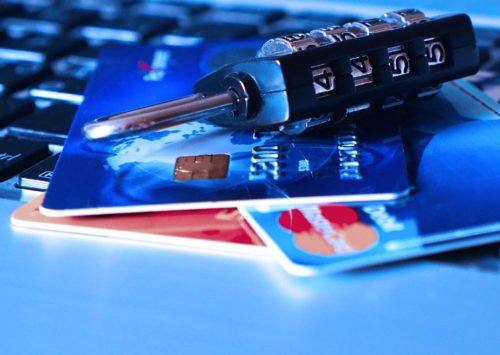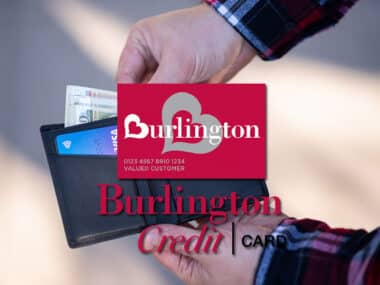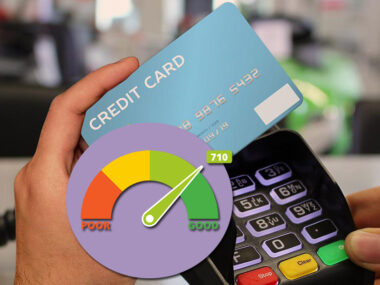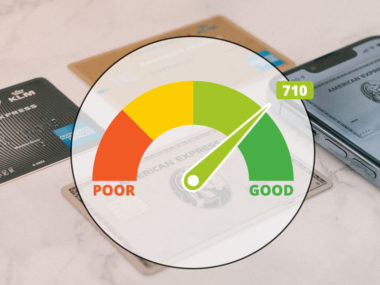An unusual email appears in your inbox. It’s a fraud alert, noting unusual activity on your credit card. Were you in Brazil a few hours ago, buying a computer? Looking around your office in Everytown, USA, it’s clear to you that no, you did not buy a computer hundreds of miles away.
You open up your credit card statement. You also did not buy a full tank of gas for your car in Africa. Or buy a $10 iTunes gift card a few days ago. You are the victim of credit card fraud.
Table of Contents
What is Credit Card Fraud?
Identity Theft vs. Credit Card Fraud
Before we get into credit card fraud, it’s important to explain what it is not. Credit card fraud is closely linked to identity theft, which the Federal Trade Commission recognizes as about 29 percent of consumer complaints, but it is not the same as identity theft. While credit card fraud can be part of identity theft, they are two very different concepts.
Identity thieves can use your personal information, like Social Security Number or driver’s license, for opening various accounts, from utilities to loans. They apply for government benefits, or try to use the information to forge new documents, like driver’s licences. They can open up a new credit card account in your name and then use the card, which is a type of credit card fraud that stems from identity theft. In this way, they can wreck your credit.
Fraudulent and Unauthorized Charges
Credit card fraud occurs when someone steals your credit card information — number, name on card, expiration date, etc. — and uses the card to purchase items in your name, using your money. Basically, if someone has your credit card (or even just the numbers, rather than the physical card), and they try to purchase something without your knowledge, that’s credit card fraud.
However, if an authorized user starts making questionable charges on your card, that’s not exactly fraud; that’s a poor choice of authorized users. As you had to approve putting them on your card, they are legally allowed to make charges to your card, even if you don’t approve of their purchases. Make sure authorized users are people you trust not to ruin your credit.
Common Credit Card Frauds and Scams
There are few common ways of stealing your credit card information, but one major tactic is hacking credit card information from a company. For example, Home Depot’s self-checkout machines were hacked in 2014, with 50 million customers’ credit card and email information leaked.
As FindLaw points out, there’s a number of ways fraudsters steal information, including:
- Stealing a new card from your mailbox
- Watching a transaction over your shoulder
- Going through your trash and finding old statements
- Making false telephone solicitations (in which they ask for your credit card info or ask you to “confirm” the information they are seeking)
There’s also the age-old technique of credit card skimming. This involves placing a skimmer, that looks like a normal card reader, over a real reader. This is often done on ATMs, especially ones not near banks, and on gas pumps. Advanced skimmers even replace the number pad to more easily capture your PIN number, or incorporate cameras to capture you entering the number. The skimmer itself “skims” information from your card, reading the magnetic strip on the card.
The information is then sold in bulk (often online), to the tune of thousands of credit card numbers at a time. A scammer buys the information, and can then methodically work their way down the list, testing credit cards by making small purchases, hoping you won’t notice — like a $10 iTunes gift card.
This type of credit card theft and fraud is, unfortunately, more common than you probably think. According to Javelin Research and Strategy, $16 billion was stolen from 15.4 million Americans in 2016. In 2015, 13.1 million Americans lost about $15.3 million.
Online Fraud and Theft is Rising
Javelin Research and Strategy also noted that card-not-present thefts, such as stealing the information from an online retailer, rose by 40 percent since 2015. Given how common credit card information theft is, it’s entirely possible someone has your numbers, and simply hasn’t tested the card yet. Or, they may have an expired credit card. Thankfully, major companies will often inform their clientele after a breach, recommending clients contact their credit card lender in order to issue a new card. The company may even issue a new card automatically, saving consumers the trouble of requesting one.
Having your card stolen online is a higher risk than having it stolen at brick-and-mortar stores, but offline consumers typically take more than 40 days to detect fraud, and thus incur higher amounts of fraudulent charges as the criminal has longer to go on a buying spree. Compare this to e-commerce shoppers, where 78 percent of victims noticed fraudulent purchases within a week.
How Do Credit Card Fraudsters Get Caught?
How Often Do Credit Card Frauds Get Caught?
How can you catch someone using your credit card? Chances are, you won’t. You might catch a big purchase if you closely monitor your credit card bills, but with smaller purchases, it could slip right through the cracks.
That’s where computers come in. Neural nets are used by lenders to profile you as a consumer, and it’s more than just making a purchase far away from where you live. What you buy, how you buy, even how you type in information to an e-merchant’s site can all be factored in.
When the lender’s computer system notices activity that doesn’t follow your normal habits, it can send you a text message, asking if it really was you. There are false positives; for every actual case of fraud caught, about 5 or 6 people are alerted to purchases they actually did make.
This begs the question, however: With that poor level of accuracy, are the algorithms that attempt to catch fraud finely tuned, or taking shots in the dark? Unfortunately, lenders are tight-lipped, and we may never know exactly how accurate their fraud-tracking services are, and how often they catch actual fraud.
Federal law states that you will not be liable for fraudulent charges. Depending on the specific credit card lender, contracts may state the bank is on the line for the money. However, the banks can then sue the merchant where the fraud took place regardless of how big the merchant is. Home Depot in the earlier example would be responsible for the losses, and would likely take a huge hit from its profits. For debit fraud, however, both the bank and the merchant split the loss. Don’t feel too bad for them, though: such losses can generally be reported on their corporate tax returns and deducted from their total tax bill.
How We Catch Fraudsters, Scammers, Hackers, and Thieves
Catching the hackers depends on how smart they are. If they order items online and have them delivered to their house, it can be almost too easy to catch them. But, if they bought your information from nefarious places on the internet and can rattle off jargon like “VPN” and “proxy,” it can be much harder, if not impossible, to ever see the fraudster brought to justice.
Catching someone not solely online can be easier, but it is still tricky. The key is to file a report as soon as possible. Once notified of potential fraud, the bank’s fraud team will start investigating. If the charges are all online, it’s not very likely the fraudster will get caught. But if the charges are made in person, there’s still a possibility. For example, Krisan Moss was caught after a $58 fraudulent charge in a nail salon.
It’s often retailers who catch thieves. The physical number on the card might not match the number contained in the magnetic strip. Or, the card might be flagged for suspicious activity. If the retailer requires an ID, the name might not match the one on the card. All of this can be caught on camera, giving authorities a face to put to the fraudster.
Timing is essential if you ever hope to catch the thief. Once you discover your credit or debit card missing, call the lender immediately. If the thief tries to use the card, the merchant can be alerted that the card is no longer in use or is suspected of suspicious activity. This can form a trail that can lead to the fraudster.
Punishment for Credit Card Fraud
Consequences and Sentences for Credit Card Fraud
If they are caught, though, and intent is proven — meaning they actually meant to commit credit card fraud and knowingly used a stolen card — the sentence differs by state statutes, as do the credit card fraud charges. For example, California penal code 484 governs credit card theft and fraud. As the Shouse Law Group points out, simple possession of stolen credit cards can lead to up to a year in county jail and a $1,000 fine as a misdemeanor. As a felony, it could be up to a year of probation and a year in county jail; or up to three years in a county jail; or even a $10,000 fine — all without actually using the card or cards.
If, however, the crime was committed on government property, against a government entity, or across state lines, the fraudster could be charged with 18 US Code 1029, a federal offense. On top of a hefty fine, they could face upwards of 20 years in prison.
Charges for Fraud, Theft, and Abuse
There can be other charges, as well, such as general fraud or theft. For example, actual use of the credit card becomes petty theft or grand theft, depending on the value of the items bought.
States have different laws, but in general, the type and value of what was stolen determine whether the charge is a misdemeanor petty theft charge, or grand theft, a felony. For petty theft, the upper limits of the sentence are between $500 and $1,000 in fines, and up to a year in jail. Repeat offenders could face harsher charges.
Grand theft sentences involve harsher fines, restitution, and jail or prison time. Again, states differ. For example, in California, grand theft can be either a misdemeanor or a felony, and the difference between up to a year in jail or up to two years in jail. The statute of limitations depends on the state. In California, for example, for theft, the statute of limitations is 3 years for a felony and a year for misdemeanor theft.
How to Catch Credit Card Thieves
If you do discover fraudulent charges, there are immediate steps you should take to limit your liability, as well as damage done to your account and credit score. You can set up fraud alerts, which can be sent by text message to your phone, instantly alerting you. It’s important to call your lender as soon as possible, to get the process started. You will probably get a chargeback to the merchant, refunding your money, or just refunding the money to your bank, and your lender will issue you a new card.
Be careful on the internet — even Amazon is susceptible to hacking. Check over your credit card statements regularly, and remain vigilant.
Looking for more information on credit cards? Visit our credit card resource center. Trying to rebuild your credit score after suffering through identity theft? Check out our tips and guides at our credit score learning and resource center. For help with disputing other errors on your credit report, visit our template letter resource center.
Image source: https://pixabay.com/





